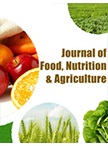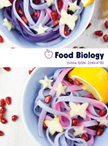Kiwifruit under plastic covering: impact on fruit quality and on orchard microclimate
DOI:
https://doi.org/10.21839/jfna.v1i1.113Keywords:
Actinidia chinensis, Actinidia deliciosa, Pseudomonas syringae pv. Actinidiae, qualityAbstract
Italy has a preeminent rank in kiwifruit industry, being the first exporter and the second largest producer after China. However, in the last few years kiwifruit yields and the total cultivated area considerably decreased, due to the disease spread of the bacterial canker caused by Pseudomonas syringae pv. actinidiae (Psa). Bacterial canker has affected significantly orchards productivity and consequently has caused severe economic losses in all major areas of kiwifruit cultivation, including Italy,and considerable damage to the international kiwifruit industry.Several climatic conditions and cultural practices affect the development of the bacterial canker.Orchard hygiene, restrictions on the movement of nursery plants, orchard management and cultural practices, chemical and biological controls and breeding programs are being employed to limit the diffusion of the disease and help kiwifruit orchards to survive and produce. A possible way seems to be the modification of environmental conditions and it is being explored through the building of plastic covers over the orchards. This research work is focused on the impact of plastic cover on fruit quality, microclimate conditions and incidence of Psa. To evaluate the impact of plastic cover on microclimate, quality of fruits and disease incidence the following parameters were evaluated: climatic parameters (temperature, PAR), quality parameters (color, fruit firmness, titratable acidity, °Brix, vitamin C), disease incidence (%). The use of a permanenttunnel modify light intensity and microclimate without any negative consequences on kiwifruits quality. Covering a kiwifruit orchard with a protective canopy reduces the spread of Psa throughout the orchard when covers are constructed over vines with low levels of infection.The use of plastic covers ensure the production of the current and future kiwifruit without compromising the quality of the fruit, but future trials will provide further information clarifying the effectiveness of the actual crop covers.
Downloads
References
Armentano, G. (2010). La mappa del cancro batterico in Italia. L’Informatore Agrario, 66(25), 54.
Azia, F., & Stewart, K.A. (2001). Relationships between extractable chlorophyll and SPAD values inmuskmelon leaves. Journal of Plant Nutrition, 24, 961–966.
Balestra, G.M., Mazzaglia, A., Quattrucci, A., Renzi, M., & Rossetti, A. (2009). Occurrence of Pseudomonas syringae pv. actinidiae in Jin Tao kiwi plants in Italy. Phytopathologia Mediterranea, 48, 299–301.
Black, M.Z., Casonato, S., & Bent, S. (2015). Opportunities for environmental modification to control Pseudomonas syringae pv. actinidiae in kiwifruit. Acta Horticulturae, 1105, 353-360.
Campbell, R.J., & Marini, R.P. (1992). Light environment and time of harvest affect ‘Delicious’ apple fruit quality characteristics. Journal of the American Society for Horticultural Science, 117, 551–557.
Dai, Y.J., Shen, Z.G., Liu, Y., Wang, L.L., Hannaway, D., & Lu, H.F. (2009). Effects of shade treatments on the photosynthetic capacity, chlorophyll fluorescence, and chlorophyll content of Tetrastigma hemsleyanum Diels et Gilg. Environmental and Experimental Botany, 65, 177–182.
Francis, F.J. (1980). Colour quality evaluation of horticultural crops. HortScience, 15, 58–59.
Hampshire, N. (2016, Feburary 1). Kiwifruit under cover. The Orchardist, 2:20.
Hayat, Q., Hayat, S., Irfan, M., & Ahmad, A. 2010. Effect of exogenous salicylic acid under changing environment:A review. Environmental and Experimental Botany, 68, 14-25.
Iglesias, I., & Alegre, S. (2006). The effect of anti-hail nets on fruit protection, radiation, temperature, quality and profitability of ‘Mondial Gala’ apples. Journal of Applied Horticulture, 8(2), 91-100.
Lee, S.K., & Kader, A.A. (2000). Pre-harvest and post-harvest factors influencing vitamin C content of horticultural crops. Postharvest Biology and Technology, 20, 207–220.
Lobos, G.A., Retamales, J.B., Hancock, J.F., Flore, J.A., Cobo, N., & del Pozo, A. (2012). Spectral irradiance, gas exchange characteristics and leaf traits of Vaccinium corymbosum L. ‘Elliott’ grown under photo-selective nets. Environmental and Experimental Botany, 75, 142–149.
MacRae, E., Quick, W.P., Benker, C., & Stitt, M. (1992). Carbohydrate metabolism during postharvest ripening in kiwifruit. Planta, 188, 314–23.
Macrae, E.A., Bowen,J. H., & Stec, M.G. H. (1989). Maturation of kiwifruit (Actinidia deliciosa cv Hayward) from two orchards: Differences in composition of the tissue zones. Journal of the Science of Food and Agriculture, 47(4), 401–416.
Monchiero, M., Gullino, M.L., Pugliese, M.. Spadaro, D., & Garibaldi, A. (2015). Efficacy of different chemical and biological products in the control of Pseudomonas syringae pv. actinidiae on kiwifruit. Plant Pathology, 44, 13-23.
Richardson, A.D., Duigan, S.P., & Berlyn, G.P. (2002). An evaluation of noninvasive methods to estimatefoliar chlorophyll content. New Phytologist, 153, 185–194.
Schepers, J.S., Francis, D.D., Vigil,M., & Below, F.E. (1992). Comparison of corn leafnitrogen concentration and chlorophyll meter readings. Communications in Soil Science and Plant Analysis, 23, 2173-2187.
Scortichini, M. (1994). Occurrence of Pseudomonas syringae pv, actinidiae on Kiwifruit in Italy. Plant Pathology, 43, 1035?1038.
Scortichini, M., Marcelleti, S., Ferrante, P., Petriccione, M., & Firrao, G. (2012). Pseudomonas syringae pv. actinidiae: a re-emerging multi-faceted, pandemic pathogen. Molecular Plant Pathology, 13, 631–640.
Taiz, L., & Zeiger, E. (2006). Plant Physiology (4th ed.), Sunderland: Sinauer Associates. p. 764.
Mierowska, A., Keutgen, N., Huysamer, M., & Smith, V. (2002). Photosynthetic acclimation of apple spur leaves to summer-pruning. Scientia Horticulturae, 92, 9–27.
Vanneste, J.L., Yu, J., & Cornish, D.A. (2010). Molecular characterisations of Pseudomonas syringae pv. actinidiae strains isolated from the recent outbreak of bacterial canker on kiwifruit in Italy. New Zealand Plant Protection, 63, 7–14.
Vanneste, J.L., Yu, J., Cornish, D.A., Max, S., & Clark, G. (2011). Presence of Pseudomonas syringae pv. actinidiae, the causal agent of bacterial canker of kiwifruit, on symptomatic and asymptomatic tissues of kiwifruit. New Zealand Plant Protection, 64, 241–245.
Welham, K. (2013). Plastic-wrap your orchard: local trials underway. NZ kiwifruit Journal, 2, 23.






 .
.